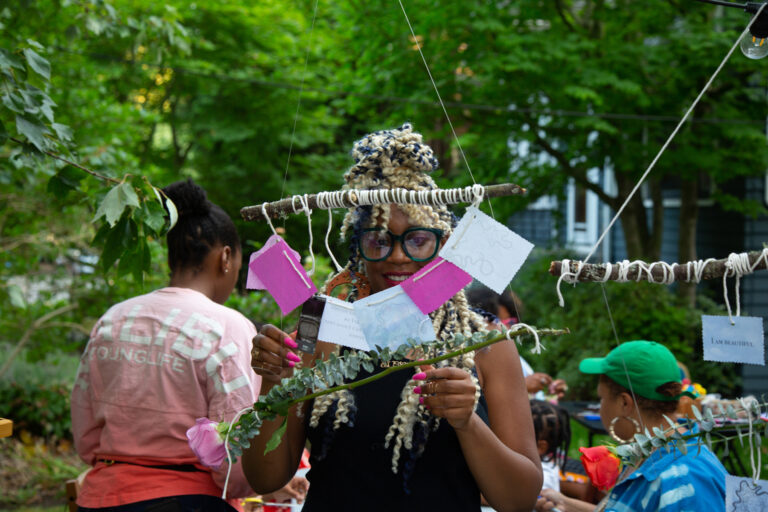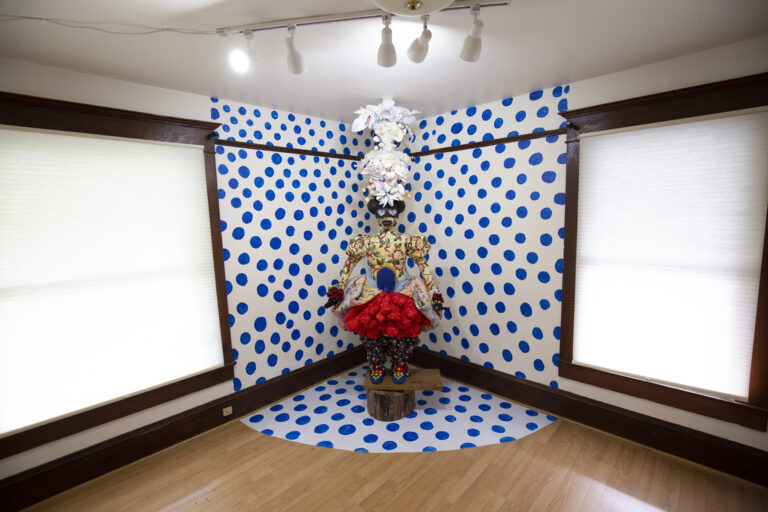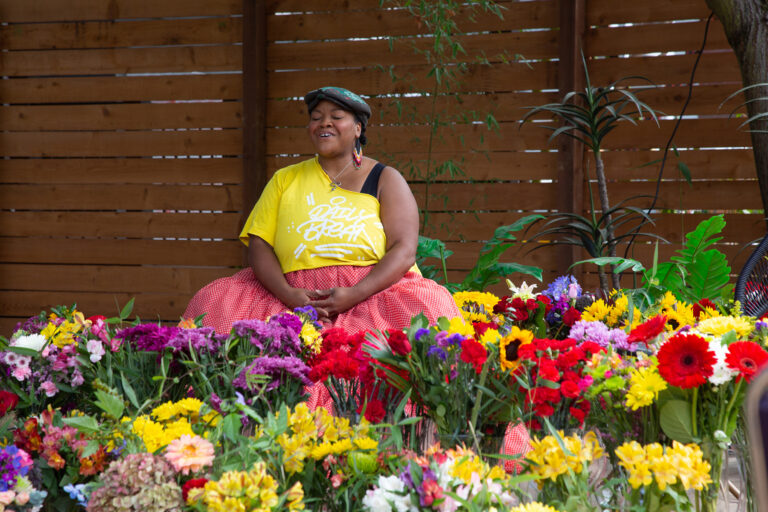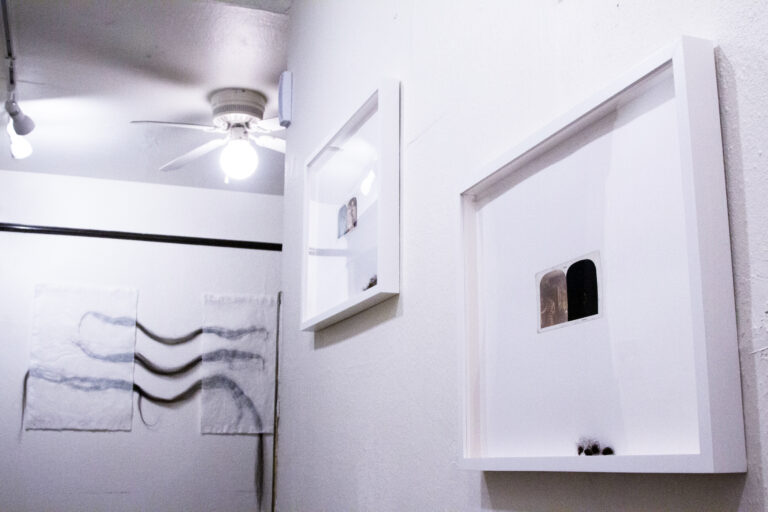Wa Na Wari is a center for Black art, community stories, social connection and organizing. Situated in a Black owned home in Seattle’s Central District, it is sometimes referred to as “the house that fights displacement with art”. With a mission to create space for Black ownership, possibility, & belonging through art, historic preservation, & connection, Wa Na Wari is the embodiment of social practice art principle put into action. Founded in 2019 by Inye Wokoma, Elisheba Johnson, Jill Freidberg and Rachel Kessler, they wanted to use the power of art to help Inye’s family save two of their homes in Seattle’s Central District.
Over the course of its first three years Wa Na Wari grew to become an important institution in the region’s cultural landscape. It exhibits twenty Black artists from around the globe annually and established Walk the Block, the largest Black visual and performing arts festival on the west coast. Wa Na Wari is a home for programs promoting land justice through policy change, food justice through urban gardening, historical archiving through oral history gathering, and artist growth through its residency program.
There is a long history leading up to how this project came to be. The two homes belonged to Inye’s grandmother, Goldyne Green, 92 years old and suffering from Alzheimer’s. After migrating from Arkansas and settling in Seattle, Inye’s grandparents, Frank and Goldyne Green, purchased six homes over the course of several decades. Their priority was providing homes for their extended family, who rented and lived in the homes. Inye grew up in the Central District surrounded by over 150 extended family members when the neighborhood was 80% black and the heart of Seattle’s Black community. By 2010 the Black community had been largely displaced, most of inye’s family had move out of the neighborhood, and Mr. Green passed away. By 2014 two of the four homes the Mr. and Mrs. Green owned had been sold. By 2016, the remaining two homes were slated to be put up for sale by the court appointed guardian. This outcome would have displaced Mrs. Green from her home, forcing her to live out her final days in a care facility. The family wanted to prevent this. At the family’s prompting Inye stepped up to restructure her finances and find a way to prevent this from happening.
As his grandmother’s estate guardian, Inye was responsible for helping to maintain her finances and care. After three years of work, Inye accomplished most of what he set out to do, but there was still a shortfall in Mrs. Green’s monthly income. To close this gap Inye joined forces with the co-founders of Wa Na Wari to rent one of Mrs. Green’s homes, turning it into a Black art gallery and community center. By renting the home for the amount she needed to close the gap they prevented the liquidation of her estate. Mrs. Green was able to stay in her home until her passing in September 2020. Wa Na Wari accomplished its first goal, preventing the displacement of one black family from their home and neighborhood. It also opened the way for more possibilities than Inye and his colleagues could have ever imagined.
At the heart of Wa Na Wari is the notion that art and artists can play an important role in creating solutions to intractable issues. In this case they are working to create resiliency and solutions to gentrification and community dislocation, something Black communities across the nation are facing. There is also a throughline connecting Wa Na Wari to Inye’s wider body of work presented on this website. From every iteration of An Elegant Utility and Separation Census, to the deeper themes explored in This Is Who We Are, and the creative impulses that shaped projects like Series One: One Verse, Inye is constantly exploring the ways his personal experiences intersect with larger political realities. He is constantly exploring all the ways he can create provocative discourse through art.
Visit WaNaWari.org





